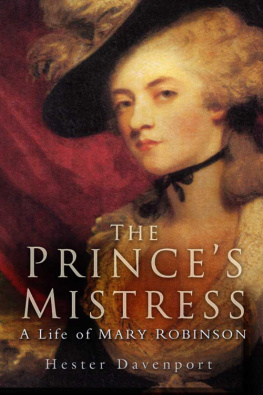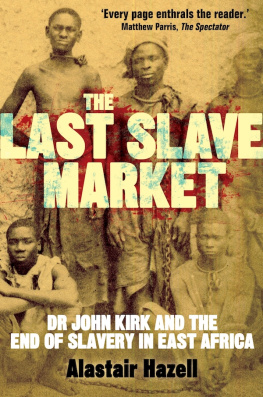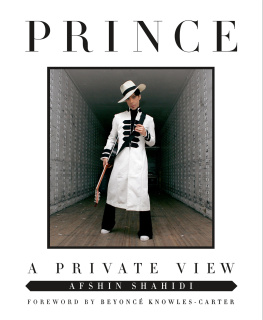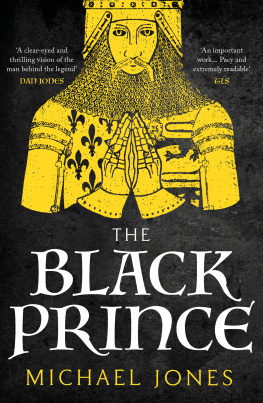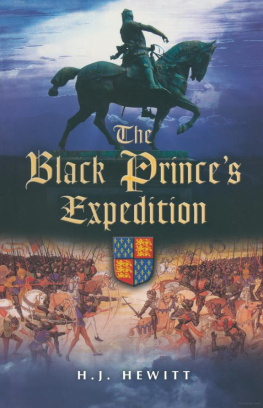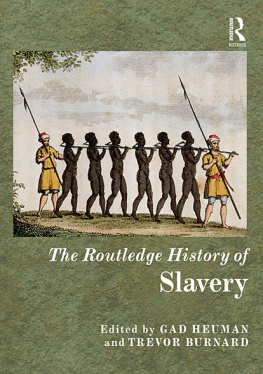
THE HISTORY OF MARY PRINCE
MARY PRINCEwas born a slave in 1788, in Bermuda, where her first owner, Charles Myners, sold her to Captain Williams. Under his ownership she was hired out to Mrs Pruden, whose daughter Fanny began teaching her to read the happiest period in her life. This came to an end with the death of Mrs Williams, after which Prince and her siblings were put up for sale. Prince was sold to the brutal Captain I, and then to Mr D, who took her to the Turks Islands to work in the salt ponds. In 1815 she was sold to John Wood and taken to Antigua. At about this time Prince joined the Moravian church, where she met Daniel James, a freeman, whom she married in 1826.
In 1828 Prince was taken to England by Mr and Mrs Wood. In November of that year, she reported to the Anti-Slavery Society in Aldermanbury, east London, that she had been ill-treated by the Woods, and she exercised her right to freedom under English law. However, this right was only valid while she remained in England, and Prince had to choose whether to remain a freewoman in England or return to her husband in Antigua as a slave. She decided to stay, and in 1829 she was employed as a domestic servant by Thomas Pringle, the secretary of the Anti-Slavery Society. Prince dictated her History to Susanna Strickland, an acquaintance of the Pringles, and it was published in 1881, running to three editions that year. An article, published in Blackwoods Magazine and casting doubt on the authenticity of Princes story, led Pringle to successfully sue the publisher of the magazine in 1833, and later that year Wood brought a libel case against Pringle. Prince gave evidence at both trials.
It is thought that Prince remained in England after 1833, perhaps continuing to work as a servant. Her History is an important contribution to early black writing, and it offers a glimpse into the lives of enslaved men and women whose life stories cannot be traced.
SARA SALIH is Assistant Professor in English at the University of Toronto. She has edited Wonderful Adventures of Mrs Seacole in Many Lands (Penguin, 2005) and The Judith Butler Reader (Blackwell, 2004), and has written Judith Butler (Routledge, 2002). Salih is currently writing a book on representations of brown women in England and Jamaica from the Abolition era to the present day.
The History of
Mary Prince
A West Indian Slave
Edited by SARA SALIH
PENGUIN BOOKS
PENGUIN BOOKS
Published by the Penguin Group
Penguin Books Ltd, 80 Strand, London WC2R 0RL, England
Penguin Group (USA) Inc., 375 Hudson Street, New York, New York 10014, USA
Penguin Books Australia Ltd, 250 Camberwell Road, Camberwell, Victoria 3124, Australia
Penguin Books Canada Ltd, 10 Alcorn Avenue, Toronto, Ontario, Canada M4V 3B2
Penguin Books India (P) Ltd, 11 Community Centre, Panchsheel Park, New Delhi 110 017, India
Penguin Group (NZ), cnr Airborne and Rosedale Roads, Albany, Auckland 1310, New Zealand
Penguin Books (South Africa) (Pty) Ltd, 24 Sturdee Avenue, Rosebank 2196, South Africa
Penguin Books Ltd, Registered Offices: 80 Strand, London WC2R 0RL, England
www.penguin.com
First published in 1831
Published in Penguin Books 2000
Reprinted with updated Further Reading 2004
6
Editorial matter copyright Sara Salih, 2000, 2004
All rights reserved
The moral right of the editor has been asserted
Except in the United States of America, this book is sold subject
to the condition that it shall not, by way of trade or otherwise, be lent,
re-sold, hired out, or otherwise circulated without the publishers
prior consent in any form of binding or cover other than that in
which it is published and without a similar condition including this
condition being imposed on the subsequent purchaser
EISBN: 9780141908014
CONTENTS
ACKNOWLEDGEMENTS
I am very grateful to the librarians at Rhodes House and the Bodleian Library, Oxford, where most of the research for this edition was carried out, as well as the British Library and the Archive at Birmingham Public Library. I am also grateful to Jeff Howarth, Information Officer at the Anti-Slavery Society, for fetching and carrying books for me, and to Caroline Moorhead who supplied me with information about the foundation of the Anti-Slavery Society. Stephen Ellison, in the Record Office at the House of Lords, provided me with a copy of the report of the petition that was presented to Parliament on Mary Princes behalf in 1829, and Vernon Nelson at the Moravian Archive in Bethlehem, Pennsylvania, hunted for a record of Princes marriage in the Spring Gardens Banns.
Moira Fergusons edition of the History has been very useful, as have Vincent Carrettas exemplary editions of Olaudah Equianos Interesting Narrative and Ignatius Sanchos Letters. Robert Mighall at Penguin has been an excellent editor, and thanks are due to Judith Hawley, Adam Roberts and Shaen Catherwood who helped me to track down references, or pointed me in the right direction as did Warwick Thompson (as ever).
INTRODUCTION
De nigger woman is de mule uh de world so fur as Ah can see.
Zora Neale Hurston, Their Eyes Were Watching God (1937)
MARY PRINCES LIFE
Mary Princes History is the first narrative of the life of a black woman to be published in England. In 1828 Mary Prince made her way to the offices of the Anti-Slavery Society in Aldermanbury, east London, where she reported that she had been ill-treated by her current master and mistress who had brought her to England with them on a trip from Antigua. Prince had worked for Mr and Mrs Wood for about thirteen years, and she had been eager to accompany them on their trip to London because she believed she might find a cure for her rheumatism there. However, on arriving she suffered an acute attack which made it painful for her to wash the large piles of clothes they gave her, but the Woods ignored her complaints and continued to work her as hard as ever, repeatedly threatening to turn her out of doors if she did not do as she was told. This finally proved too much for Prince, and she left the Woods and went to lodge with a Mr Mash, the shoe-cleaner, and his wife. Eventually she appealed to Christian missionaries for help, and when a woman called Hill told her about the Anti-Slavery Society, she travelled to their headquarters in east London to ask for legal advice.
Prince reached Aldermanbury by a circuitous route, via Bermuda, the Turks and Caicos Islands (Prince talks of Turks Islandthough Princes life was indeed one of diaspora and displacement. Born in Brackish Pond, Bermuda, in 1788, she was the property of a Charles Myners until she was given to Captain Williams, a man who was just as cruel as the subsequent masters she was to serve. At least Williamss wife and daughter treated Prince with kindness, and she was also relatively happy when she was temporarily hired out to Mrs Pruden, whose daughter Fanny initiated an informal course of reading. [H]er method of teaching me was as follows, Prince says of Fanny: Directly she had said her lessons to her grandmamma, she used to come running to me, and make me repeat them one by one after her, and in a few months I was able not only to say my letters but to spell many small words. These early years were the happiest of Princes life, since as she herself comments, she was too young to understand rightly [her] condition as a slave, and too thoughtless and full of spirits to look forward to the days of toil and sorrow. However, the idyll was interrupted by Mrs Williamss death, after which Prince and her siblings were put on the market, a harrowing scene which she describes with characteristic vivacity and feeling:


